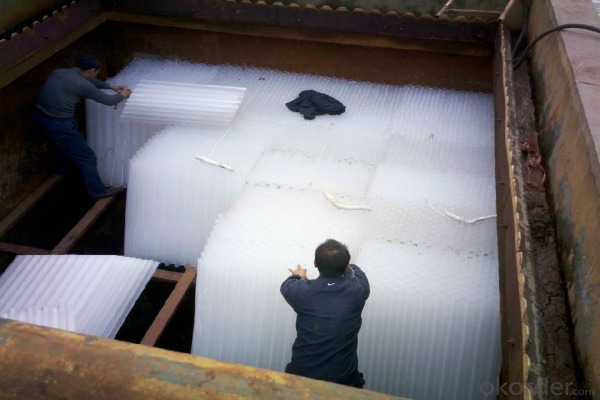
Tube settler is a machine that is regularly used in wastewater treatment plants to beautify the settling process. It is a reasonably priced approach to enhancing the effectiveness of the sedimentation process. Tube settlers are made up of a sequence of parallel tubes that are inclined at a sure angle. These tubes extend the settling place of the tank and thus, enhance the settling of solids.
Step 1: On-site inspection for safety hazards
Before starting the tube settler installation process, it is important to conduct a site inspection. The site inspection will help determine the appropriate location of the tube settlers, as well as the size and quantity of tube settlers required for the specific application. The site inspection will also help identify any potential obstacles or hazards that may impact the installation process.

Step 2: Maintain a neat and tidy site
After conducting the site inspection, the next step is preparing the site for installation. This involves clearing the area of any debris or obstacles and leveling the ground to ensure a stable foundation for the tube settlers.

Step 3: Installation of Supports for tube settlers
The next step is to install the supports for the tube settlers. The supports are typically made of steel or concrete and are designed to withstand the weight of the tube settlers. The supports should be installed in a level and stable manner to ensure the tube settlers are correctly aligned.
Step 4: Assembly of the Tube Settlers
Once the supports are in place, the tube settlers can be assembled. The tube settlers are typically made of lightweight materials such as PVC or polypropylene and are easy to handle and install. The tube settlers are assembled by connecting the individual tubes together using connectors or couplings.

Step 5: Installation of the Tube Settlers
After the tube settlers have been assembled, they can be installed onto the supports. The tube settlers should be installed in a manner that ensures they are securely attached to the supports and properly aligned. The tube settlers should be installed at an angle of approximately 60 degrees to ensure maximum settling efficiency.
Step 6: Connecting the tube settler to the system
After the tube settlers have been installed, they need to be connected to the system. This involves connecting the inlet and outlet pipes to the tube settlers. The inlet pipe should be connected to the top of the tube settlers, while the outlet pipe should be connected to the bottom.

Step 7: Testing and Commissioning for tube settlers
After the installation is complete, the tube settlers should be tested to ensure that they are functioning properly. The testing should include checking the settling efficiency and ensuring that the inlet and outlet pipes are properly connected. Once the tube settlers have been tested, they can be commissioned and put into operation.

In conclusion, the installation of tube settlers is a simple and cost-effective method of improving the efficiency of the sedimentation process in wastewater treatment plants. The installation process involves conducting a site inspection, preparing the site, installing the supports, assembling the tube settlers, installing the tube settlers, connecting them to the system, and testing and commissioning. Proper installation of tube settlers can result in significant improvements in settling efficiency and overall system performance.







